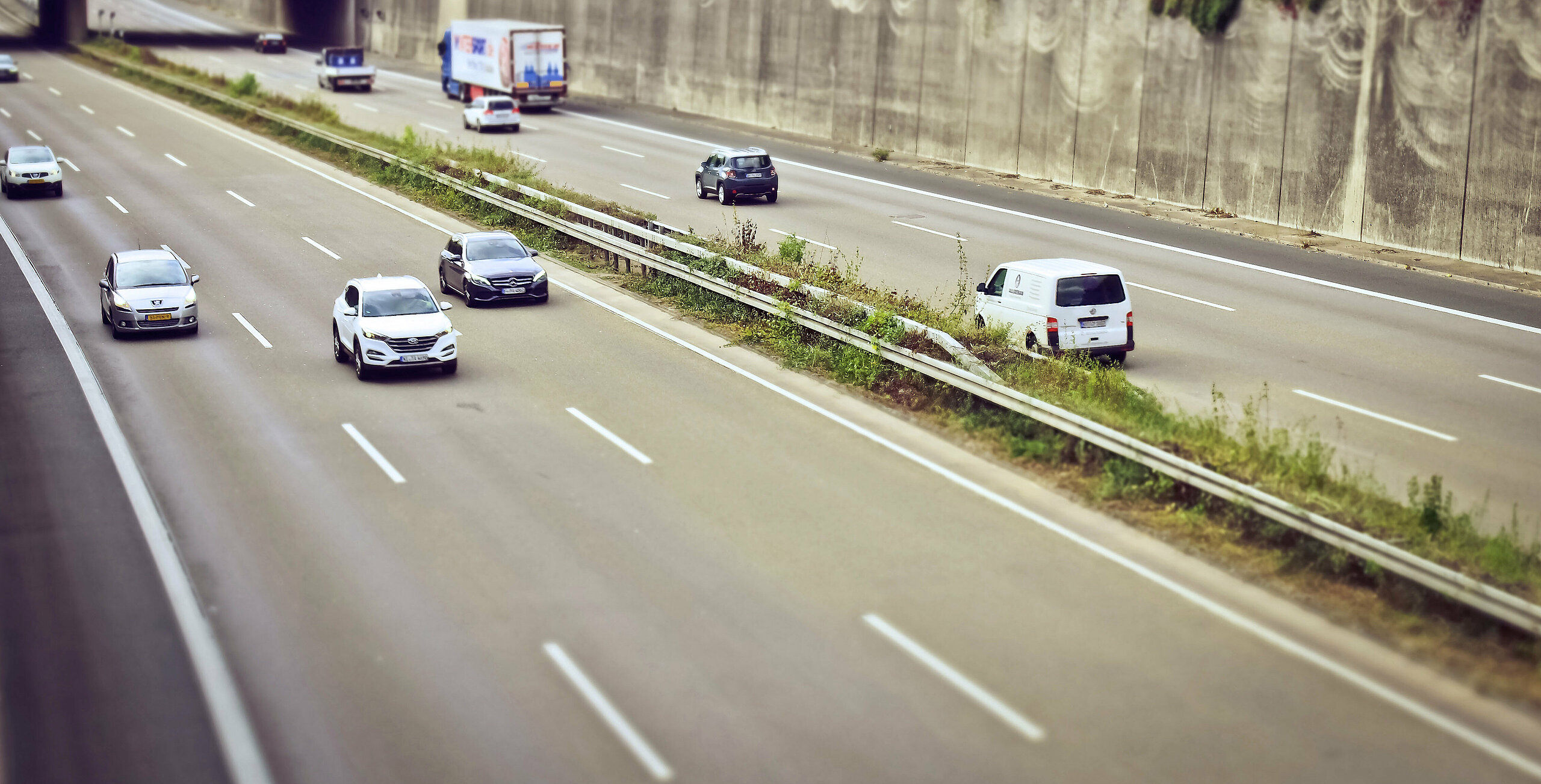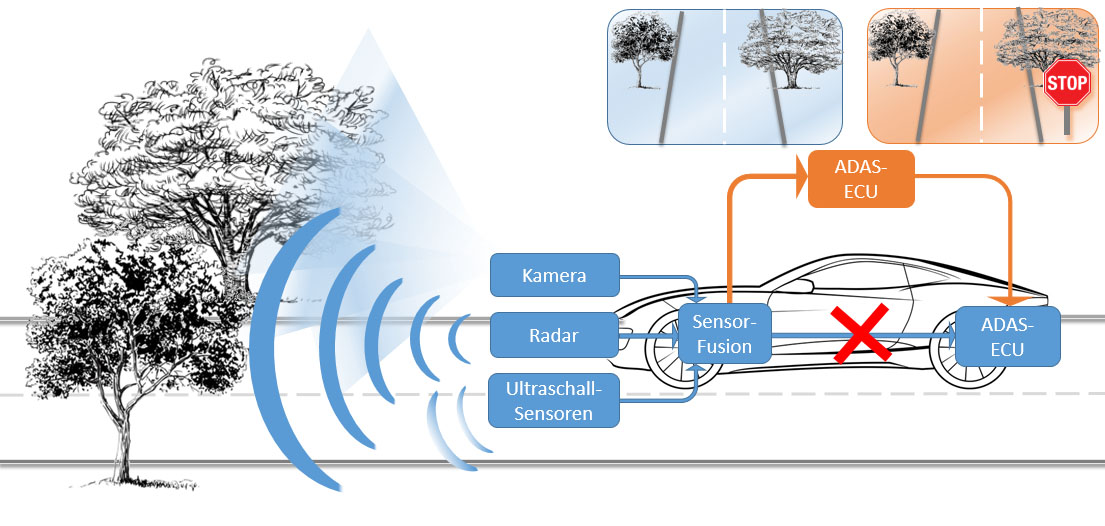
Validation of Advanced Driver Assistance Systems (ADAS) through Augmented Reality
Advanced Driver Assistance Systems (ADAS) such as the active lane departure warning system and traffic sign recognition support the driver, offer comfort and assume responsibility for increasing road safety. These complex systems go through an extensive testing phase, which results in optimisation potential with regard to quality, reproducibility and costs.
Today's test methods can largely be divided into two categories. On the one hand, the testing of the assistance system with the help of virtual worlds and the testing on the test track with the help of real objects.
How can automotive suppliers and vehicle manufacturers benefit from the combination of both test methods? This question is being addressed in this research project, in which the testing methods are combined by means of reality-enhancing procedures (augmented reality, AR). The real camera images of the vehicle are expanded with additional virtual information.
IEEM generates static and dynamic 2D as well as 3D objects for the research project
To develop this research project, a cooperation between the Institute for Energy Efficient Mobility, the Université de technologie de Belfort Montbéliard (UTBM) from France and the automotive company EVOMOTIV has been entered into, which is supported by the Federal Ministry for Economic Affairs and Energy (BMWi). The research approach is to extend reality in the test case with virtual pedestrians, road markings and other traffic objects. The aim is to combine the main advantages of a virtual world, such as the reproducibility and the arbitrary complexity of a test scene, with the realism of the test track and to transfer them into an application-oriented possibility.
Goals
What can be implemented with it? The superimposition of lanes enables, for example, the testing of a lane departure warning system independent of the lane. Scenarios such as the appearance of temporary lane markings or the absence of sections can be tested on the same test area. Lane narrowing and widening can be represented as well as international differences between lane markings. For testing congestion assistance systems, vehicles driving ahead can be superimposed on the camera image. In the first phase of testing, second vehicles including drivers can thus be dispensed with, reducing the costs of the tests and increasing the safety of the test engineers. Furthermore, test cases with traffic signs as well as pedestrians and cyclists can be augmented situationally and quickly.
The combination of different test situations is also possible and the unlimited variety of test scenarios allows a significant increase in the depth of testing at an early stage of development. This increases the quality of the testing and thus of the overall system. Due to the increasing number of driver assistance systems and the constant development towards autonomous driving, the application area of the software programme can be expanded at will.

Research questions to be addressed
- Which approach is suitable for testing realistic, static and dynamic objects above walking speed?
- Which approach must be chosen to adapt the generation of virtual objects to the light and weather conditions at higher speeds?
- Which test scenarios for driver assistance systems are suitable for the augmented reality approach?
- What can a human-machine interface look like in particular the selection of the test driving cycle in a test case?
- How can the current driving situation be displayed to the driver during the practical test cycle, so that the same augmented objects are visualised to the driver as to the ADAS?
More about our equipment: Automotive Mobility Lab
Key data
Karlsruhe
Institute of Energy Efficient Mobility (IEEM)
Moltkestr. 30
76133 Karlsruhe
Post >
Institute of Energy Efficient Mobility (IEEM)
Postfach 2440
76012 Karlsruhe